Same Day Flowers To All Locations In Europe & The U.K
Sending Sympathy & Funeral Flowers: 8 Tips from a European Florist
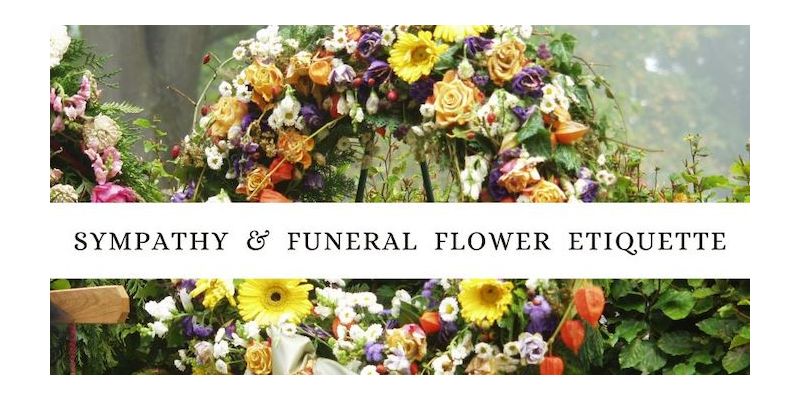
Flower gifting traditions vary worldwide and it’s important that we recognize the dos and don’ts for the gift to be a good experience for both the giver and receiver. This especially holds true for sensitive moments like funerals, grieving, and remembrance. There are location and culture-specific guidelines you can follow to give, and receive gifts, without causing offense.
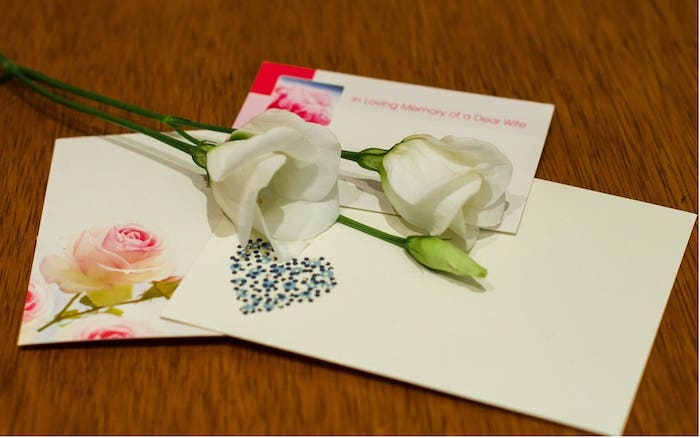
For this post, let’s focus on European countries. Here is a rundown on what you can and can’t send when expressing condolences through fresh flowers in Europe.
Know that most European countries use chrysanthemums solely as a funeral flower. In general, bouquets or arrangements with even number of flowers are also reserved for funerals. There are different types of funeral flower arrangements available. A casket spray or funeral coffin that sits on top of a casket is usually ordered by the immediate family or close family members of the deceased. Letter tributes or floral arrangements shaped in letters to form a text such as “Mom” or “Papa” are also common. These letter tributes sometimes also spell out the name or nickname of the departed. These are picked by the immediate family.
Wreaths are a popular choice among relatives, friends, and colleagues. Standing sprays are commonly chosen by groups like the work colleagues or neighbors of the deceased. Flower pillows or cushions are also common. When expressing sympathy or sending condolences, posies and flower baskets are chosen.
We’ve listed the most popular funeral and sympathy flower choices in different European countries to be a bit more specific.
In Italy, flowers play an important and symbolic role in funeral and mourning. Elaborate funeral floral arrangements are common as they signify respect for the deceased and the bereaved family. Funeral wreaths are commonly attached to caskets. The church where the prayer ceremony or funeral liturgy is held will also be adorned with fresh flowers. A bouquet or wreath of the deceased’s favorite flowers make for a thoughtful tribute. Sympathy flowers with roses, lilies, and carnations are given to the family of the deceased to offer condolences. Sending sympathy flowers is an expression of respect and genuine care for the family who lost a loved one. Chrysanthemum is the flower that’s associated with death but any white flower is appropriate for this solemn affair.
In Germany, the chrysanthemum is also associated with loss but white lilies are among the most popular funeral flowers. For Germans, lilies symbolize peace and conveys the wish for a peaceful rest. In general, white flowers are associated with grief and are reserved for funerals. When expressing condolences as a group (colleagues, relatives, schoolmates, etc.), most send floral wreaths. Bouquets, flower baskets, and flower bowls with carnations are given to the bereaved to express condolences and share in their mourning. Condolence cards are also important where the message of sympathy is commonly written by hand.
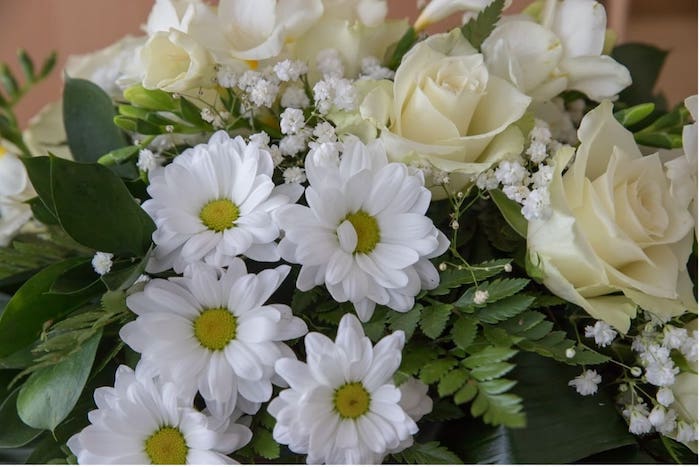
In France, white chrysanthemums are commonly put on graves. Lilies mean innocence and make a fine choice for a condolence or funeral flower. Dark crimson roses also depict mourning. Avoid yellow roses, though, as it means infidelity and red carnations as they signify ill will.
In Finland, the widow or the closest person to the deceased is the first to lower flowers on the casket. The text from the funeral flower card is also read out loud before lowering the blooms. For deceased veterans, white and blue flowers are commonly given as tribute. Usually, the deceased’s family will have memorial feasts six weeks and a year after the death. You can send sympathy flowers during these times, too.
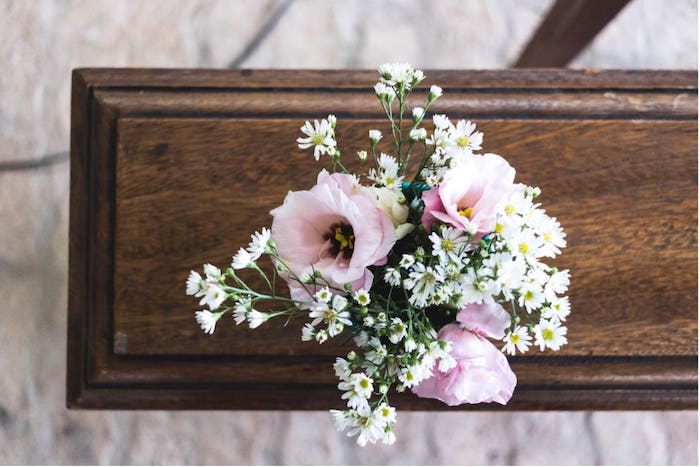
In Ireland, funeral flowers are chosen based on the age of the deceased and the relationship of the sender to the deceased or bereaved family. White flowers like lilies and roses are common choices. Traditional wreaths in green with white and orange flower accents like chrysanthemums, roses, and germini are also popular. Friends and relatives of the deceased typically send sheafs, wreaths, and posies.
In United Kingdom, white lilies and white carnations are the most common funeral flowers. Teardrop flower arrangements are also popular. Bespoke arrangements like floral letter arrangements are commonly selected as floral tributes. When sending sympathy flowers, wait until after the funeral and include a message offering your condolences and support.
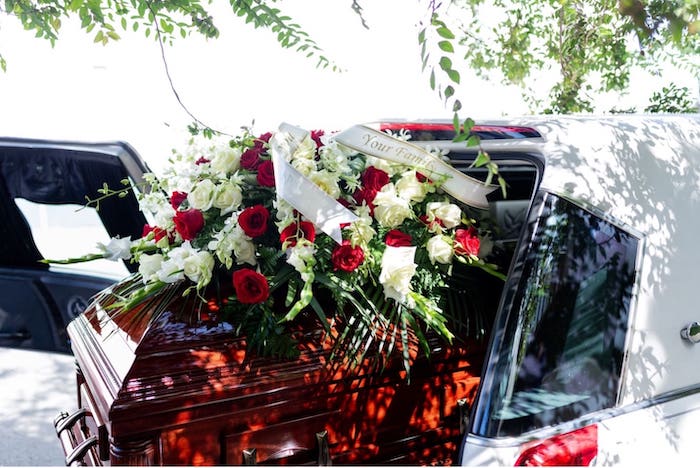
In Belgium, Croatia, Lithuania, Norway, Luxembourg, and Bosnia and Herzegovina, white chrysanthemums speak of grief and are deemed funeral flowers. Reserved for mourning and remembrance, chrysanthemum flowers are only given as a token of sympathy.
In Latvia, red roses were once reserved only for funerals and mourning but this is now changing. An excellent choice for memorials or farewell ceremonies are bi-colored arrangements with red and white roses. Freesias, bush roses, orchids, and eucalyptus are among the blooms commonly used in funeral bouquets in Latvia.
Red or white carnations are two popular Polish funeral flowers. In Poland, the immediately family of the deceased will usually get a cross-shaped floral arrangement or a casket floral spray. When sending condolence flowers to the bereaved’s home, you can opt for calla lilies or other white blooms.
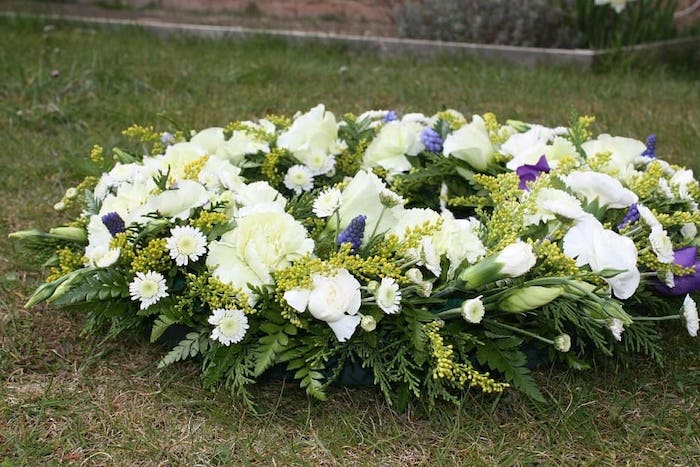
In Slovakia, bouquets with purple ribbons are reserved for funerals. Even-numbered bouquets express grieving and mourning but don’t give 13 flowers to anyone regardless of the occasion, even, or reason as it is considered bad luck.
In Switzerland, white chrysanthemums and white asters are reserved strictly for funerals. You may also want to avoid red roses and red carnations when sending sympathy flowers as these blooms imply romance.
